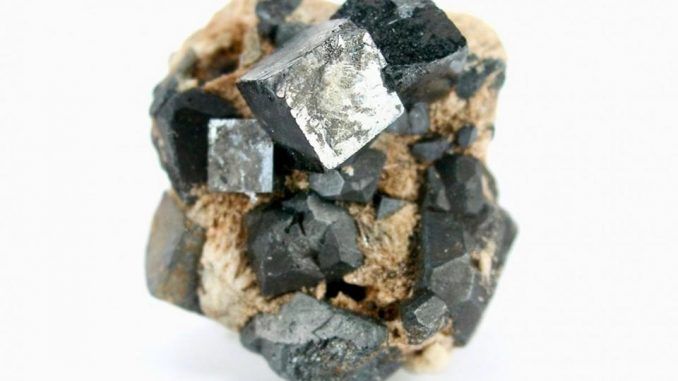
Scientists have discovered a rare mineral in Russia that could hold the key to boosting internet speeds by 1000%.
The mineral, perovskite, was first discovered in Russia in the 1830’s. Scientists say that it has a number of extraordinary properties, many of which they are now learning about.
Forbes.com reports: Perovskite (CaTiO3) is a calcium titanium oxide mineral, but the magic lies in this minerals ability to house many different cations in its physical structure, giving engineers the ability to modify the mineral as they see fit. While scientists have known about the mineral for quite some time, originally discovered in the Ural Mountains in Russia in 1839, researchers continue to find useful characteristics of this mineral.

BYPASS THE CENSORS
Sign up to get unfiltered news delivered straight to your inbox.
You can unsubscribe any time. By subscribing you agree to our Terms of Use
Perovskite is found in Earth’s mantle has been mined in Arkansas, the Urals, Switzerland, Sweden, and Germany. Each variety has a slightly different chemical makeup, allowing for different physical characteristics. One such useful characteristic discovered in 2009 is perovskite’s ability to absorb sunlight and generate electricity, a natural form of a photovoltaic cell (solar cell). The mineral is currently under development for use in solar cells, displays, and catalytic converters.
Next Generation Terahertz Data Transfer
Now, scientists have discovered the mineral’s ability to use the terahertz spectrum in transferring data. The specific type of perovskite used is both inorganic and organic and can be thinly layered on a silicon wafer. The system’s unique ability is that it uses light instead of electricity to transfer data, allowing transfer speeds 1,000 times faster than current technology.
The terahertz band lies in between infrared light and radio frequency (100 to 10,000 gigahertz). This compares to the 2.4 gigahertz range most cellphones use today. The layered perovskite mineral can transfer data through light waves in the terahertz band using a simple halogen lamp. Using a halogen lamp, the research team found that they can modify the terahertz waves as they pass through the perovskite. This allowed the research team to encode data in the waves and transfer data 1,000 times faster than traditional electronic data transfers.
This research builds on the previous discovery of modulating waves in perovskite. However, that required expensive and high-powered lasers which made it commercially too expensive. The new discovery utilizes simple inexpensive halogen bulbs. In addition, the team found that they can specify the color of the light to modulate data simultaneously on different frequencies. Hence, not only can they transfer data 1,000 times faster using terahertz waves, they can simultaneously activate multiple data transfers using different colored lamps.
This technological breakthrough opens the door to using terahertz data transfer in future generation computing and communication. At a thousand times faster, this inexpensive and simple way to transfer data presents a multitude of opportunities to transform our digital lives. Unfortunately, we’ll have to wait at least 10 years until it becomes commercially ready according to the authors. When that time comes, this could present a step change in computing and communication.

Be the first to comment